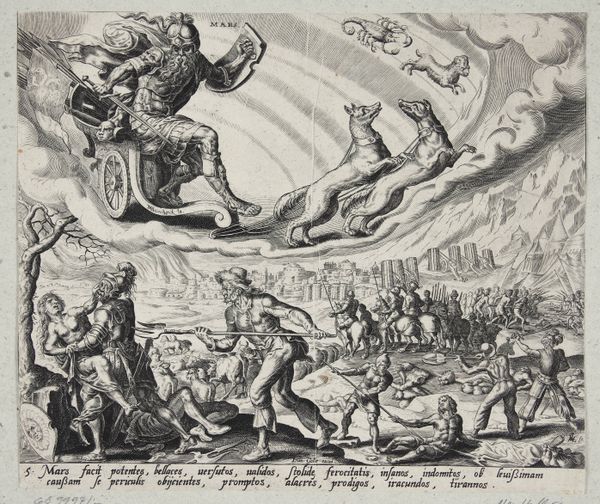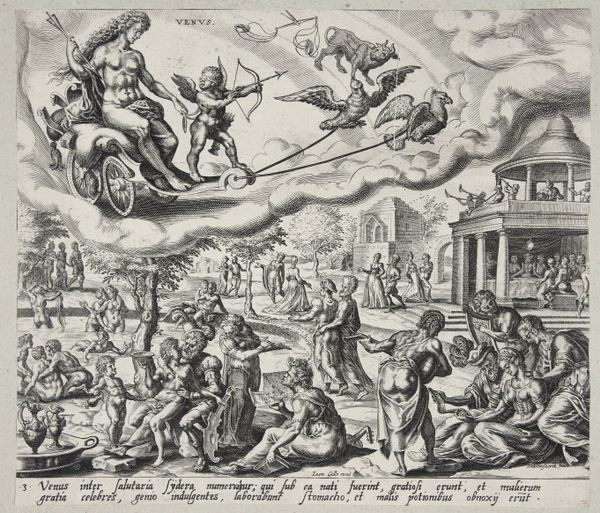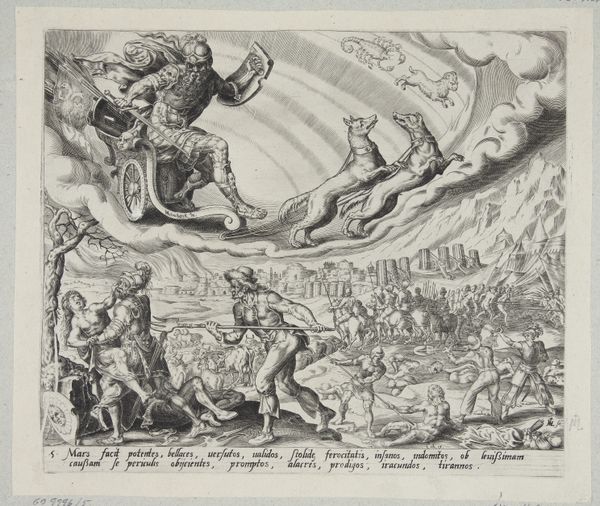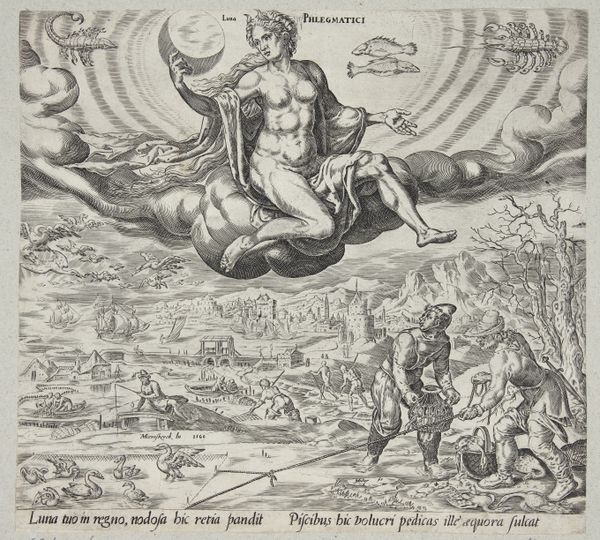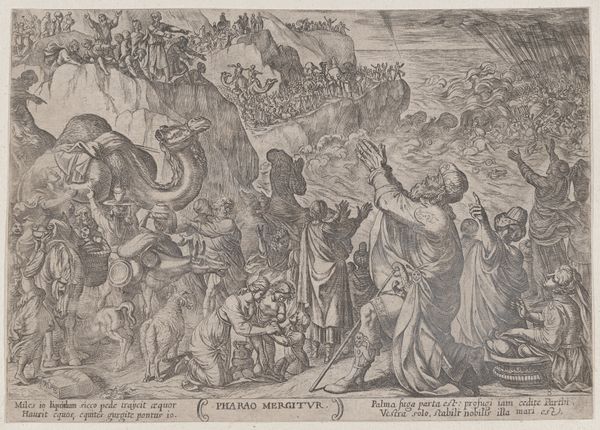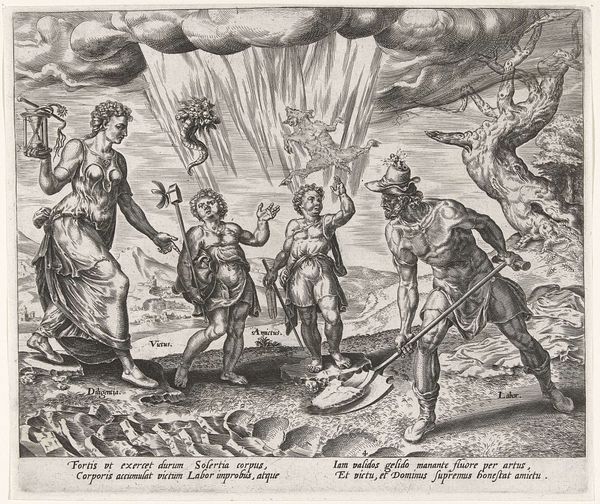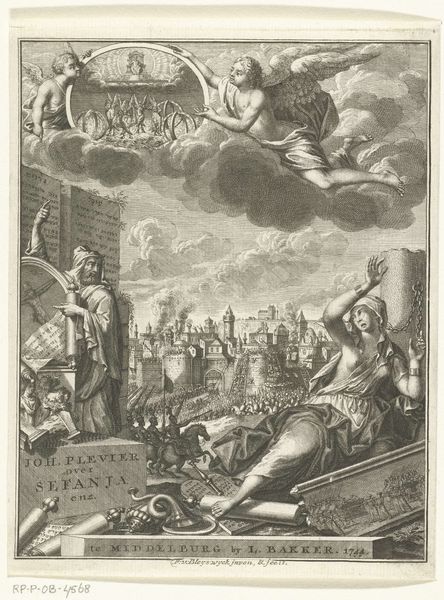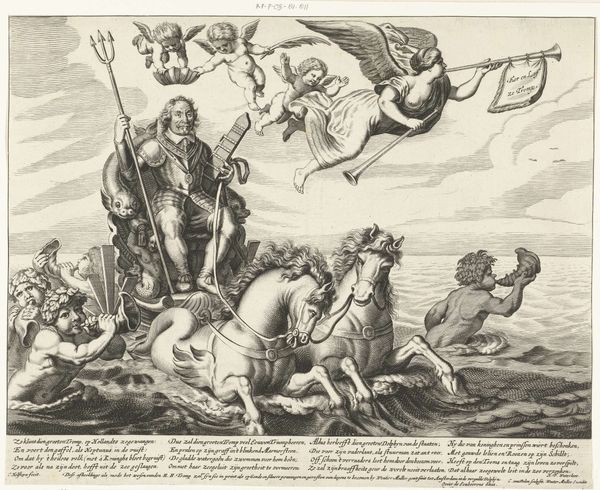
print, engraving
#
allegory
# print
#
mannerism
#
figuration
#
history-painting
#
engraving
Dimensions: 215 mm (height) x 235 mm (width) (monteringsmaal), 214 mm (height) x 232 mm (width) (bladmaal)
Curator: Harmen Jansz. Muller's 1566 engraving, "The Choleric Temperament," presents a fascinating visual essay on, well, choler. My first thought: incredibly detailed! There's so much frenetic energy packed into this relatively small print. The composition feels almost overwhelming. Editor: Overwhelming, yes, and deliberately so. Look at how this engraving visualizes 16th-century anxieties around masculine rage, violence, and authority through its use of figuration, allegory, and symbolic weaponry. The means of production are also intriguing: engraving allowed for relatively cheap reproductions of imagery related to societal humors. Who were its target consumers? Curator: The commercial availability of this piece would reach a middle class increasingly eager to show off some knowledge. Let’s consider Mars, at the top: he's rendered not as a distant god, but in contemporary armor, an explicit symbol of worldly power available through human enterprise and making. Editor: Absolutely, but notice the classical and astrological signifiers: Aries the ram and the centaur Sagittarius hover near Mars. How does Muller employ recognizable signs of authority but critique its function? His Mars figure embodies unbridled power, which extends over subjugated bodies in the lower sections of the composition. Curator: And what of these subjugated bodies? Observe the meticulous rendering of each individual engaged in battle below Mars; Muller, or his printmakers, demonstrate impressive skill at suggesting the texture and heft of arms and armor as it clashes on the battlefield. One almost feels one could touch those very arms. Editor: And that level of tactility implicates viewers. By depicting soldiers who appear actively involved in violent clashes on land, Muller exposes the destructive forces inherent in the endless pursuit of masculine conquest. The smoke and the fire not only reference a historical setting of the European wars, but signify an undercurrent of political conflict as intrinsic to our humanity, which could perhaps find solace with each passing signifier, with each astrological change in sign. Curator: Looking at it now, the print anticipates some later anxieties of early capitalism with all this industrial production of weaponry to enforce dominance. This certainly offers viewers a way to think through the entanglements of labor, violence, and social structures embedded within the ruling classes’ war-mongering agenda. Editor: I agree, understanding its materiality offers insight into our shared human impulse to create and consume art that both mirrors and perhaps challenges systems of control. Thank you for your time. Curator: Thank you. This engraving is certainly a conversation-starter about the power of materials and visual allegory within cultural production.
Comments
No comments
Be the first to comment and join the conversation on the ultimate creative platform.
